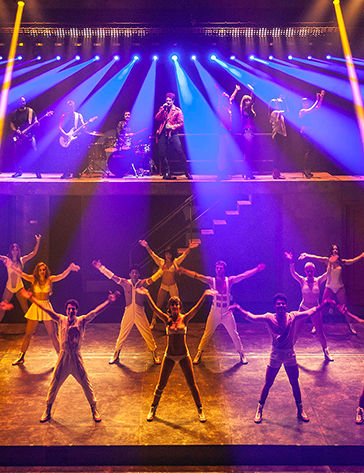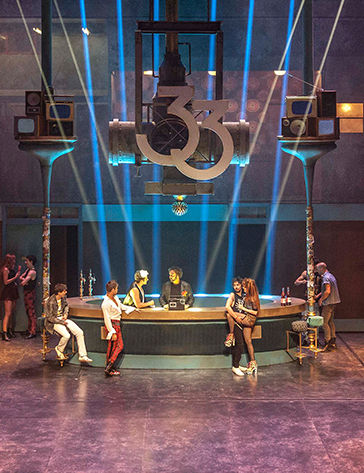Hoy no me Puedo Levantar (or ‘Today I can not get up’) is the most successful musical in Spain, and is based on songs by the popular spanish band, Mecano. It is a reflection of the La Movida Madrileña countercultural momevent which took place in Madrid in the early ‘80s, and one of Mecano’s band members, Nacho Cano, helped put it all together. For the last eight years, Javier Isequilla has been in charge of sound design and mixing, and in that period, the production has gone from strength to strength...
How did you get into the music biz, and how long have you been working in audio?
I’m from a very small town, and since I was a child, I have always been related to the world of music. I got into choral singing first, and then played in rock bands, which is really where I started to take an interest in the technical side. I studied electronics, then got into telecommunications engineering, and in 1994 I moved to Madrid to study at a private audio school (CES) as I was ready to dive into the world of live sound!
Have you mainly worked monitors?
Actually, no; most of my work has been as a FOH engineer, not so much as a monitor guy. At the start of my career, I did a lot of TV work and live concerts, but what I liked doing most is what I have spent the last 15 years working in: musical theatre. When working in this part of the industry, it’s very fulfilling, and you get to reap the benefits, as every day in theatre is a learning day! That’s also especially true in today’s industry, as technology makes each day different to the previous.
The show you’re currently involved in, Hoy no me Puedo Levantar, is the most popular in Spain...
Yes it is. I have been sound designer and engineer for about eight years now, here in Madrid. The show also toured in Spain, and was then exported to Mexico, where I also held the role of sound designer. The show has really evolved; it’s far more spectacular than the original, visually; and we also incorporate video mapping, so technologically, it’s much more complete.
You recently changed your monitoring setup. How has that improved workflow?
Dramatically. When I first started working on the production, we were using very basic 16-channel mixers, and we had very little flexibility, not to mention the fact that the audio quality was so poor. It was an easy enough system to assemble, especially on tour, but after a while, the musicians did not like it, simply because of the audio quality. So, two years ago at the PLASA show [in London], we saw the myMix system for the first time. The guys explained the system’s impressive capacity, and I listened to it, and immediately liked what I heard. I got in contact with the [myMix] distributor in Spain, and told him I wanted to try it. At that time, we were already working on the new production of Hoy no me Puedo Levantar. We did a test in the theatre with the musicians from the show, and they absolutely loved it, so I decided to include them in the new production.
What drew you in to the myMix system?
What I instantly liked about myMix was its capacity for growth, and the ability to send different mixes between different myMix units. Also, to have remote control over the myMix is a great asset, and for this production in particular, myMix was a perfect fit, because each mixer has two input mics, which we use for communication between musicians, like talkback. What’s also very interesting is the possibility of having replacement musicians rehearsing while the show is running; they can connect their instrument inputs into another myMix unit, and play along to the live mix. Then there’s the ability to record, which is, of course, another great feature. One of my only fears was that the headset connection was weak, but after nine months of everyday use, myMix hasn’t given me a single problem.
How many musicians are using myMix, and how is the system configured?
We have seven myMix units in total. There are five musicians located in an orchestra pit, so each of them has a myMix unit, then there’s another myMix for talkback, and a spare. It’s configured for an IEX-16L-A system, which is receiving 16 signals from a DiGiCo SD- Rack, through the Toslink format. We’ve got a DiGiCo SD10 at FOH, and we’re running 16 channels, incorporating drums, bass, guitars, keys, vocals, and a click; and the network distribution system is a Cisco
SF302-08MP.
What is your golden rule when mixing musical theatre?
Well, on all 12 of the theatre productions I’ve worked on to date, it’s always been a case of getting across the emotions that the actors create, as accurately as possible. To convey those feelings is totally key, and then to accompany that with quality effects or music, to recreate each scene with sound; if you manage that, mixing theatre will always be a very satisfying experience.

